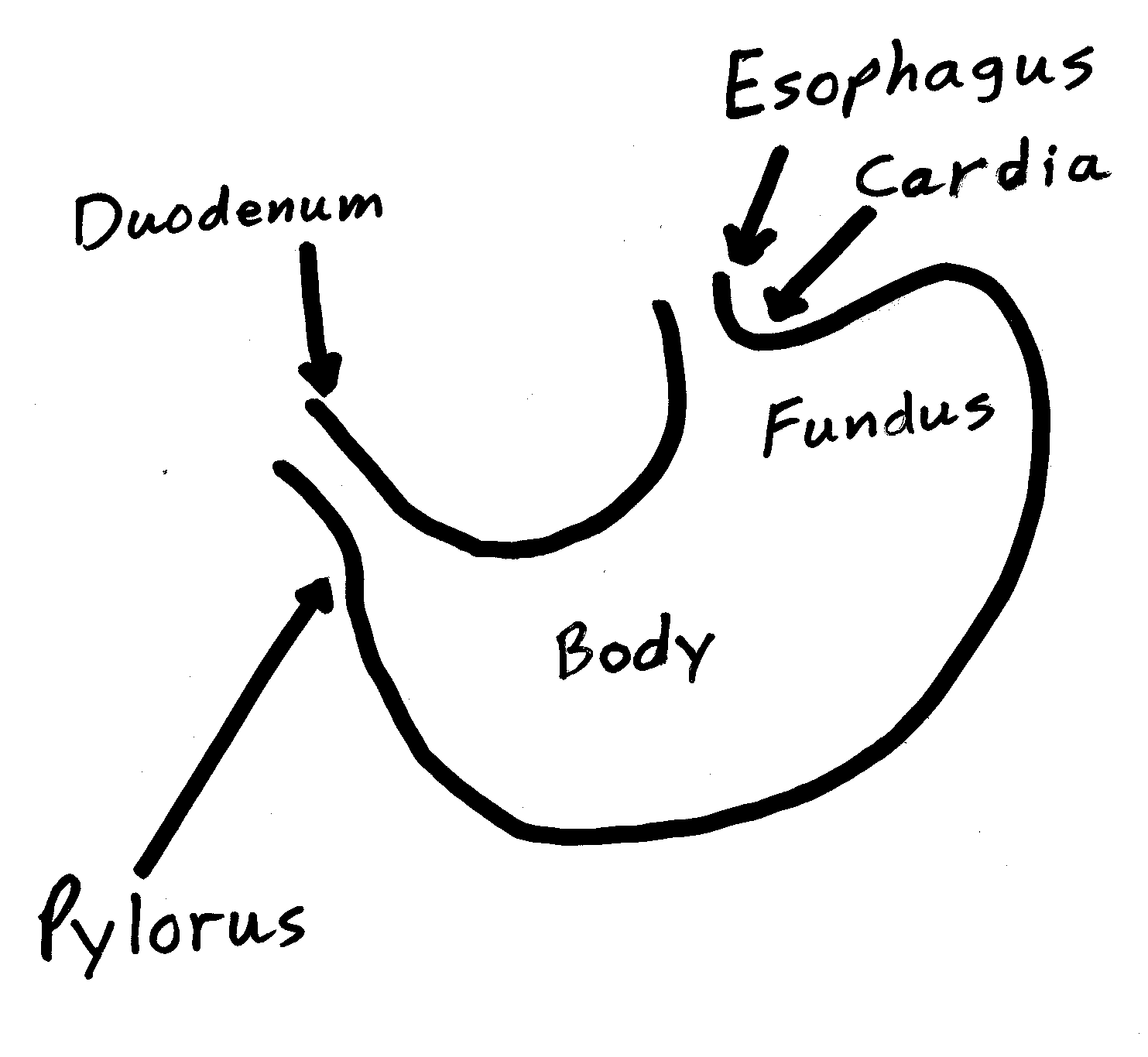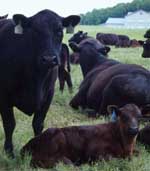|
The Stomach
In common domestic animals, stomachs are
either simple, single chambers (monogastric) or complex,
multi-chambered structures (ruminant).
Simple stomach: The simple stomach is a
single chamber lined by large muscular folds (the rugae) and
thousands of tiny gastric glands. The gastric glands produce mucus,
digestive enzymes and hydrochloric acid (HCl). When food enters the
stomach, it is mixed with the mucus, enzymes and acid which convert
it to semi-liquid chyme that is slowly released into the small
intestine.
 |
The Simple Stomach |
Ruminant stomach: The ruminant animal has
three forestomachs and one true stomach. The forestomachs
are
 | the reticulum - the smallest of the
forestomachs. Its folded lining and its position directly under
the opening of the esophagus make it susceptible to damage from
swallowed foreign objects - hardware disease. |
 | the rumen - the largest of the forestomachs.
It is a large fermentation vat. |
 | the omasum lies on the right side of the
abdomen and is a dehydrating, grinding vat. |
 | the abomasum is the ruminant's true stomach.
It lies under the right side of the rumen. |
 |
rumen (left view) |
 |
rumen
(right view)
|
Good digestive function in the ruminant system
depends on rumination and
eructation.
| 






